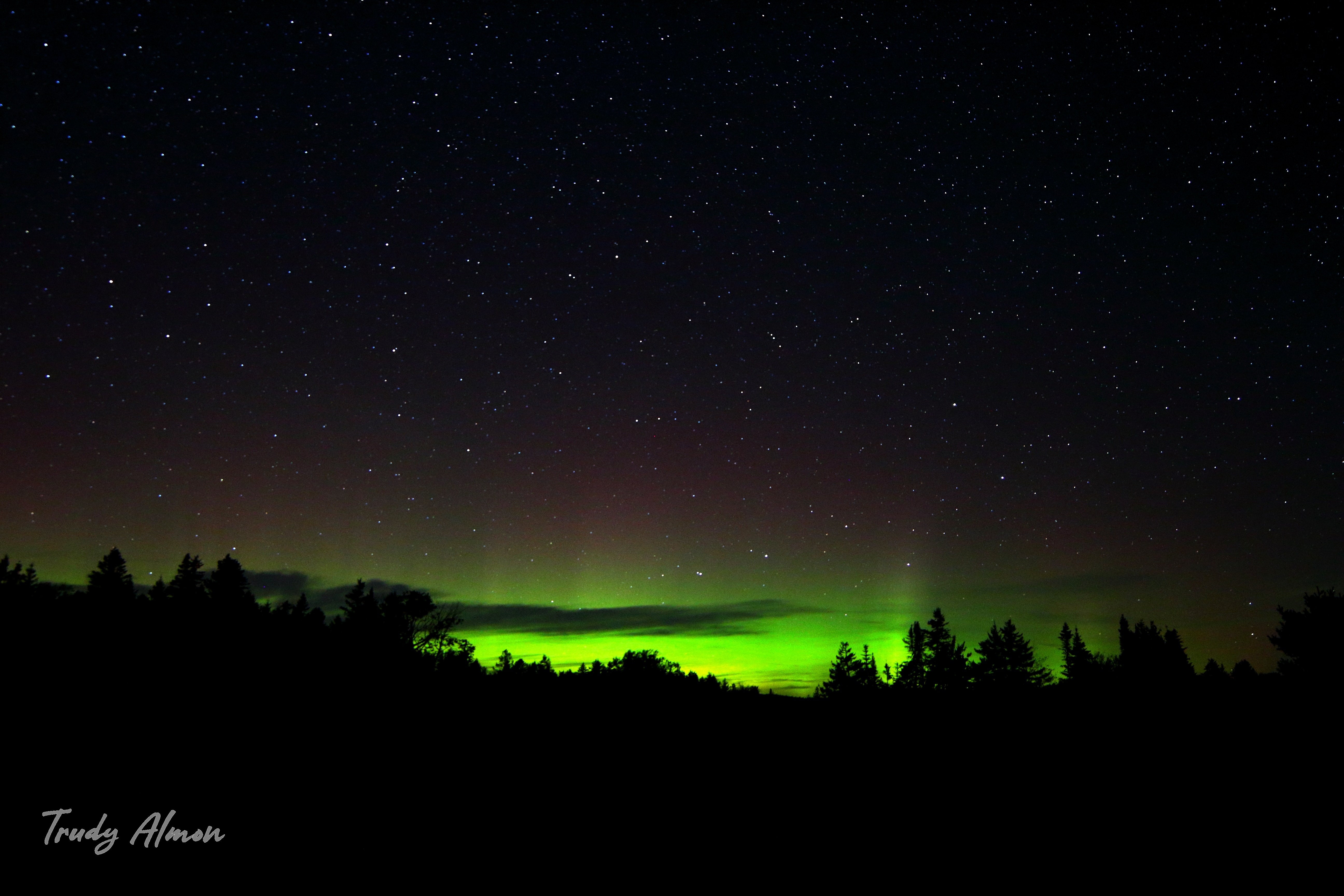This Week’s Sky at a Glance, 2022 March 12 – 19 ~by Curt Nason
With Thursday being party time for many O’Revelers, is there anything green that we can see in the sky? Yes, but rarely. We can see stars that are red, orange, yellow, blue or white, but not green. The colours are representative of their outer temperature, with red being coolest and blue the hottest. Any star with an outer temperature corresponding to green, which is in the middle wavelengths of the visible spectrum, emits approximately equal but lesser amounts of red and blue light. This combination gives us white light. Our Sun’s outer temperature of 5500 C puts it just on the white side of yellow.
Some stargazers have claimed to see green stars that are part of a binary pair with a red giant star. Green is the complementary colour of red, and it is thought that if you observe a white star after staring at a red one, the complementary after-image can make the white star look green. It is said that Zubeneshamali, the brightest star in Libra and the one with the longest common name, is green. I did see it once as a very pale green in an 8-inch telescope, but that might have been due to the power of suggestion. Uranus usually looks pale green in a backyard telescope.
The most common reason for green in the sky, although still fairly rare in New Brunswick, is the northern lights. Energetic electrons from the Sun (aka Sol, the shortest name for a star) can make oxygen atoms in our upper atmosphere emit green light in a manner similar to that of a neon light. Northern lights are seen more frequently around the equinoxes, and if electrons in the solar wind have escaped the Sun through holes in its magnetic field lines we could get lucky this week. If not, then take a break from the partying to look up at the constellation O’Ryan.
This Week in the Solar System
Saturday’s sunrise in Moncton is at 6:37 am and sunset will occur at 6:20 pm, giving 11 hours, 43 minutes of daylight (6:42 am and 6:26 pm in Saint John). Next Saturday the Sun will rise at 7:24 am and set at 7:30 pm, giving 12 hours, 6 minutes of daylight (7:29 am and 7:35 pm in Saint John). Daylight light time kicks in at 2 am this Sunday; two months too soon, in my opinion.
The Moon is full early Friday morning, three days short of March 21 and resulting in Easter occurring in mid-April. Venus and Mars are at their closest this Saturday, and over the next couple of weeks they will be racing toward Saturn in the morning sky. Mercury is heading sunward for an equinoctial tryst with Jupiter under cover of bright twilight. And if you are wondering why it is darker at 6 am Sunday, it has nothing to do with Neptune being in solar conjunction.
On Sunday evening at 8 pm, tune in to the Sunday Night Astronomy Show via the Facebook page or YouTube channel of Astronomy by the Bay.
Questions? Contact Curt Nason.
[photo~ Northern Lights in southern New Brunswick by Trudy Almon]

